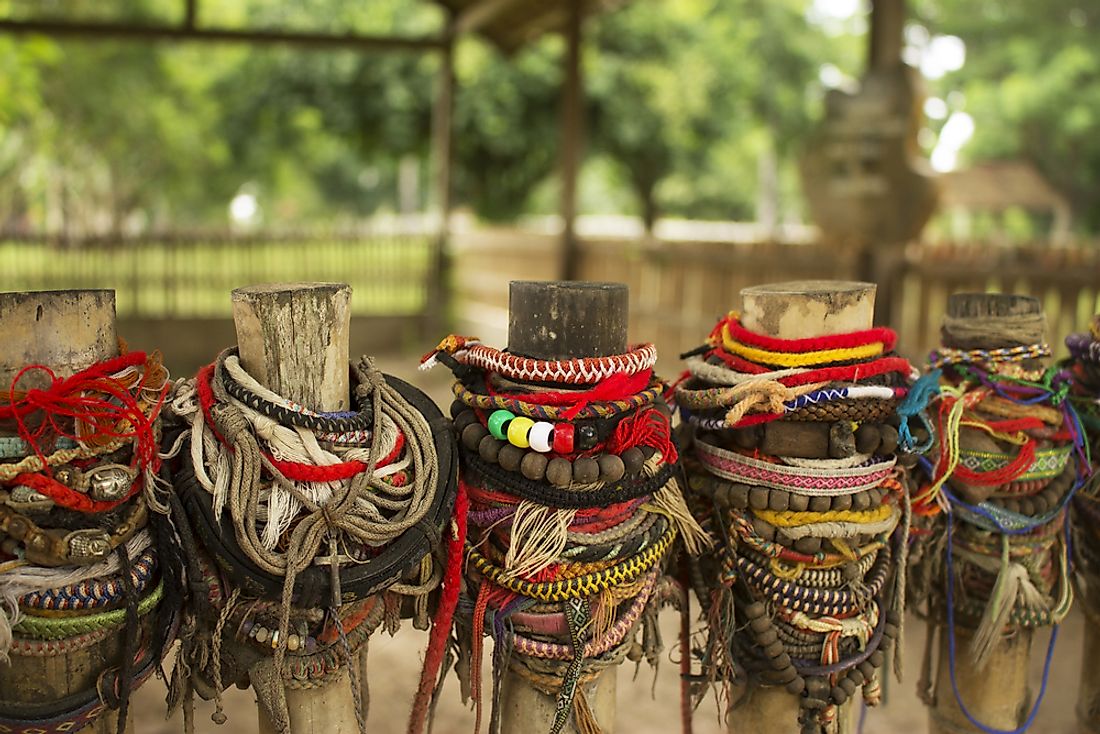What Caused the Cambodian Genocide?

The Cambodian genocide was the mass killing of people who were perceived to oppose the Khmer Rouge regime led by Pol Pot. The genocide resulted in the death of between an estimated 1.5 and 3 million people between 1975 and 1979. The regime intended to turn Cambodia into a socialist republic with agriculture as the core economic activity. After successfully overthrowing the government, the Khmer Rouge changed the country’s name from Cambodia to Democratic Kampuchea. Millions of people were forced from the cities into labor camps in rural settlements to work on rice fields. Any person who opposed the regime including the rich, monks and religious leaders were tortured and killed.
Precursors To The Genocide
The Khmer Rouge, formally known as the Communist Party of Kampuchea, was formed during the struggle for independence against the French. By 1968 the movement evolved into a political party. In March 1970, an American backed coup outed the then-head of state King Sihanouk and appointed the Prime Minister Lon Nol as the head of state. Sihanouk allied with the Khmer Rouge, setting the stage for a genocide. At the time, the US was bombing Viet Cong positions in Cambodia, killing thousands of Cambodians in the process. Millions of peasant farmers loyal to the Khmer Rouge were armed by the Chinese government and by April 17, 1975, they took control of the capital city and overthrew the government of Cambodia. The city was considered economically invaluable and thousands of people were forced into labor camps in the villages. Starvation, physical abuse, exhaustion, diseases, became prevalent in the countryside.
Genocide Begins
The Khmer Rouge was extremely brutal in the way it handled the masses. The educated lot consisting of teachers, doctors, artists, monks, religious leaders, and those who worked in government facilities were singled out as a potential threat to the regime and eliminated. Those in opposition were ambushed and killed alongside those who could not work. Once a family member was killed, other family members were targeted to prevent them from seeking revenge. There was no immunity in the conflict, unlike other genocides. Even those on the Khmer Rouge side were eliminated once they were suspected of not being loyal enough. Children were killed under a notion that stated “to permanently disable the weed you pull out the roots. “Several facilities such as schools, medical facilities, and churches were closed down. Child soldiers became part of the Khmer Rouge army.
International Response
The international community remained silent on the ongoing atrocities in Cambodia. Neither Europe nor the US took interest in what was happening despite the frantic efforts by the western media to raise concerns. The United States had suffered heavy casualties in the Vietnam War and was in no position to engage in another conflict.
The End Of The Genocide
In 1977, clashes between Cambodia and Vietnam began. Two years later, Vietnam forced its way into Cambodia and overthrew the government which was comprised of the defectors of the Khmer Rouge. Other members fled to Thailand where they occasionally attacked Vietnam. For the next decade, the ousted members tried to overthrow the Vietnamese-backed regime with the aid of the Soviet Union and China. Vietnam withdrew from Cambodia in 1989 after the US placed economic sanctions on the occupied state while the Soviet Union withdrew its financial aid. In 1991, a coalition came to power. Two years later former head of state Norodom Sihanouk was elected as the president.











